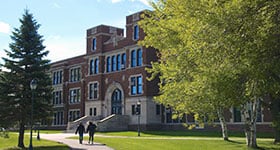Why is there much emphasis on hiring and retaining effective school leaders? Researchers at the universities of Minnesota and Toronto found a link between school leadership and student achievement as detailed in The Wallace Foundation’s “The School Principal as Leader: Guiding Schools to Better Teaching and Learning.”
The study also found that the top two factors affecting student achievement were teachers and principals. “The job used to be bells, building, budgets, buses; now the pendulum has swung to instructional leadership,” according to “Capturing the Leadership Premium.”
Linda Darling-Hammond, Professor of Education at the Stanford Graduate School of Education, says that administrative leadership comes up repeatedly as a crucial factor in effective teaching. Surveys show that administrative leadership and support play a key role in teachers’ decision to stay with or leave a school.
Traits of Successful School Leaders
While it is possible to be an effective teacher in a school with a weak leader, the lack of strong leadership eventually takes its toll. With the support of strong leaders, effective teachers become even better.
The Wallace Foundation describes five steps effective school leaders take.
- Create a vision of academic success for every student. Student achievement was not always the top priority for every principal. The role has shifted from merely managing the school to helping students achieve high academic standards.
- Establish an environment conducive to learning. Effective leaders focus on engaging the community, reviewing student data, and tweaking teaching methods. They tend not to focus on problems and “war” stories.
- Cultivate leadership. Strong principals inspire staff by encouraging them to be leaders and empowering them with decision-making capabilities. The report from the universities of Minnesota and Toronto showed a connection between schoolwide leadership and higher math and reading scores.
- Work to improve classroom instruction. Successful principals know research-based strategies and take steps to continually improve the quality of education. They coach teachers, encourage professional learning, and discuss strategies for individual and team-based instructional approaches.
- Manage people, data and processes. Skilled principals make the most of the resources available to get things done and achieve goals.
In “The Principal Perspective,” Jim Hull identifies seven characteristics of effective principals:
- Have three years of experience as a principal.
- Serve at least three years at that school.
- Delegate leadership responsibilities beyond paperwork.
- Have clearly defined instructional goals.
- Provide continuous feedback and support with a focus on realistic goals.
- Hold spontaneous, informal classroom visits or teacher evaluations and provide feedback.
- Have freedom to achieve goals set by school boards and superintendents who define what makes a good school.
Believe it or not, school leaders do not need to work long hours to be successful. The focus is on how they spend their time. Effective school principals work on teacher development at least once a week because it directly impacts teaching and learning.
How Teachers Can Become Leaders
Teachers already have some of the qualifications to move into administration — a bachelor’s degree, teaching license or certification, and classroom experience. The number of years of teaching experience required varies by state.
The next step is to gain leadership skills. Teachers can accomplish this by becoming a team lead, chairing a committee, or asking the principal for leadership opportunities. They will also need to earn a master’s degree and obtain a school administrator license or certification, or both. The licensing requirements vary by state.
While researching online Master of Science in Education programs, make sure the school is accredited. When an accrediting agency approves a program for accreditation, it means the coursework, faculty, and student support meet the agency’s standards for quality.
Teachers who want to become principals should focus on quality instruction, find the right support and training, and cultivate leaders on their teams, according to Linda Darling-Hammond in Five Key Responsibilities — The School Principal as Leader.
Most principals earn a master’s degree in school leadership. The University of Wisconsin-Superior’s MSE — Educational Administration offers a PK-12 Principalship track to help educators prepare for and move into leadership roles. UW-Superior offers two additional tracks for an educational administration M.Ed. degree: PK-12 Director of Instruction, and Director of Special Education and Pupil Services.
In the PK-12 Principalship track, core courses cover theories and research in administrative leadership, curriculum management and development, school law, and teacher evaluations. The courses cover all facets of school leadership. UW-Superior holds accreditation from the Higher Learning Commission — a widely respected accrediting body.
UW-Superior’s online MSE in Educational Administration program allows educators to complete coursework on a schedule that fits their job, family life and other commitments. Graduate students who work as educators will be in a good position to complete the year-long practicum. In doing so, they will be able to apply their new knowledge and skills in a real-world setting.
Learn more about University of Wisconsin-Superior’s online Master of Science in Education — Educational Administration.
Sources:
Center for Public Education: The Principal Perspective: Full Report


